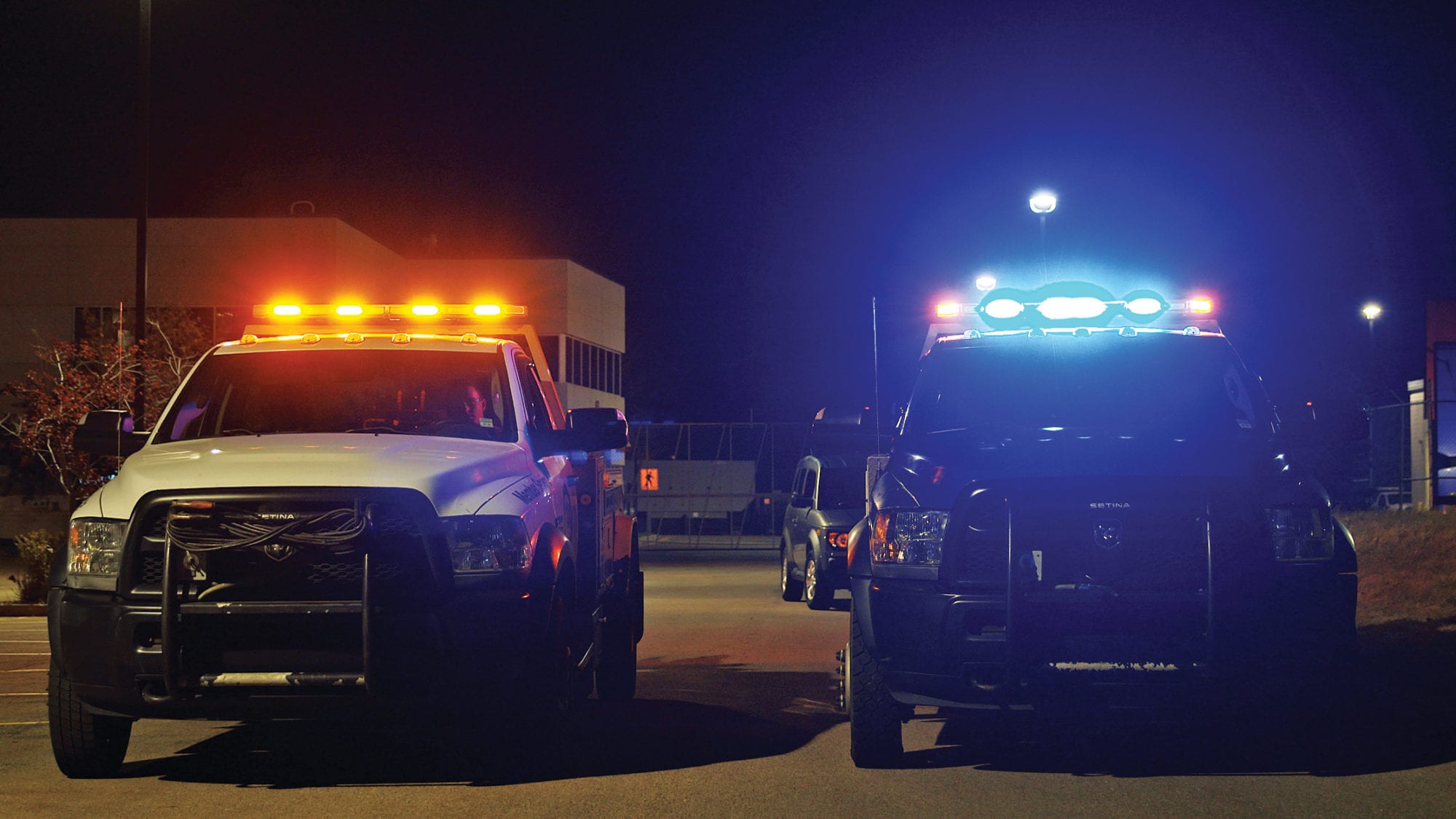New June 30, 2022: Blue flashing lights are now permitted on tow trucks in Alberta, in addition to the current amber, helping to improve the visibility and safety of tow operators and those they’re responding to. When you see blue and amber ahead, know that a tow truck operator is helping a stranded motorist—so please slow down, move over, and give them room to work, so everyone (including you!) can get home safely.
One moment, Kevin, an AMA roadside responder, was placing traffic cones at the side of the icy road. The next, he was lying on the ground with a broken wrist and two torn shoulders. He’d been hit by a passing vehicle. Over the next year, he would undergo multiple surgeries, physiotherapy and counselling (it was nine months before he was able to drive again). Another surgery and rehab is still to come.
All while he was simply doing his job.
AMA performs 500,000 roadside rescues each year—some of which are dangerous enough to require both a tow truck and a secondary “safety blocker unit” truck. Kevin, who has worked for AMA for nearly three decades, decided six years ago to start driving a blocker truck, which has extra lights, directional arrows and prominent signage. “It’s my way of protecting my colleagues and helping them do their jobs,” he says.
SAFETY CONCERNS
Even with blocker units and other safety measures—tall reflective pylons, high-visibility clothing, flashing amber lights, and ongoing training—roadside safety remains a real concern.
Veteran AMA tow truck operator Dave Kempinski says part of the reason is that motorists see amber lights everywhere: They’re part of the everyday environment, used on many vehicles and traffic signs. Last winter, Alberta saw three serious instances of motorists crashing into roadside towing scenes; there have already been others this winter. In each case, the tow trucks’ amber lights were on.
MORE TO READ
Slow down to 60 to keep Alberta tow truck operators safe
Kevin won’t be able to operate a blocker truck again until at least this fall. And even when he’s ready, his wife Deanna might not be—unless changes are made. “I would be scared if he went back out on the road, because we had to think about what life would be like without him,” she says.
ADDED PROTECTION
“Every Albertan deserves the right to be safe at work, even if their office is at the side of the road,” says Jeff Kasbrick, AMA’s vice-president of government and stakeholder relations.
That’s why AMA wants to add blue lights to the amber beacon already in use. According to traffic-safety research, colour combinations draw more attention than lights of just one colour. Blue and amber is the most visible combo in low-light conditions and bad weather, which is often when tow operators are doing their most dangerous work.
Snowplows or tow trucks use blue lights in many Canadian provinces and U.S. states. Tow trucks in Saskatchewan have used them since 2017, following the death of an operator. “Let’s not wait for that to happen in Alberta,” Kempinski says.
MORE TO READ
Anatomy of an AMA roadside rescue call
AMA is meeting with Alberta’s Minister of Transportation on an ongoing basis to express the urgent need for blue lights on tow trucks—an addition that is also supported by other key traffic-safety stakeholders.
ROADSIDE AWARENESS
The status quo isn’t working for tow truck operators or stranded drivers. If you need roadside assistance, “Stay in your car, with your seat belt on, until the tow truck operator tells you it’s safe to get out,” Kevin says.
When you do get out, be vigilant. Kempinski says he has often had to grab motorists by the arm to prevent them from being hit. “People think the side of the road is a safe zone,” he says. “But in most cases, it definitely is not.”
